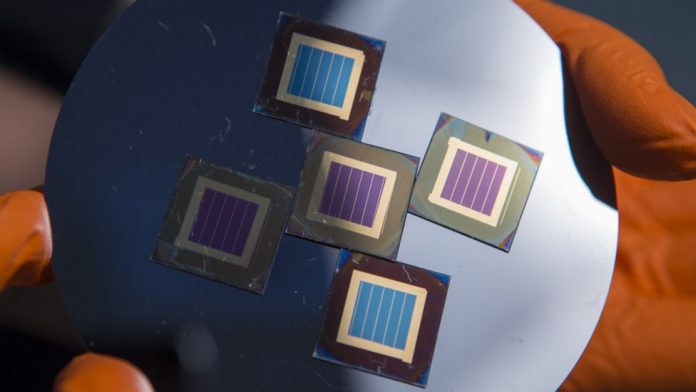The use of solar photovoltaic cells as a renewable energy source is booming, as the technology becomes more efficient and less expensive. Stacking perovskite solar cells on top of silicon ones is one way to increase the amount of sunlight harnessed, and now researchers at Australian National University (ANU) have broken a new efficiency record for these tandem solar cells.
The researchers say that their new perovskite-silicon tandem solar cells have hit 27.7 percent efficiency for converting sunlight into energy. That’s more than double where the technology was just five years ago (13.7 percent), and a decent step up from reports two years ago of 25.2 percent.
Interestingly, this is already outperforming most commercially available solar cells, which hover around the 20-percent efficiency mark. These are based solely on silicon, and that technology is expected to bump up against its maximum upper limit in the next few years.
Both silicon and perovskite are good at converting sunlight into energy, but together they work even better. That’s because the two materials absorb different wavelengths of light – silicon harvests mostly red and infrared light, while perovskite specializes in green and blue.
To make the most of this, researchers stack semitransparent perovskite cells on top of silicon ones. The perovskite picks up what it needs, while the other wavelengths filter down to the silicon. In this case, the ANU researchers made the design even more effective by tweaking the top layer.
“We coated the perovskite active layers in the perovskite solar cells with a new material n-butylammonium bromide, which is another type of perovskite material but it arranges in a two-dimensional manner,” The Duong, lead researcher on the study, tells New Atlas. “This material helps to reduce the defects on the surface of the perovskite active layers, therefore it improves the perovskite solar cell performance.”
The team is now working on improving this efficiency even further, with commercialization of the technology fast approaching. According to the researchers, efficiency only needs to hit about 30 percent before it becomes viable for mass production, and this is expected to happen by around 2023.
The research was published in the journal Advanced Energy Materials.







